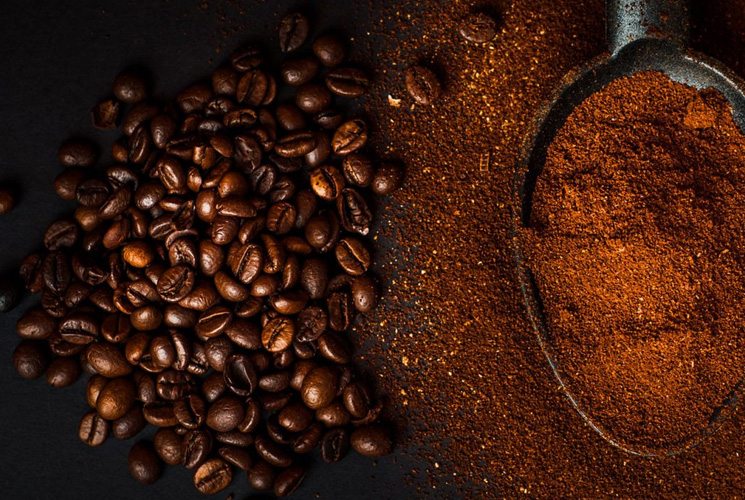In the age of speed, where every gesture is optimized to save time, choosing ground coffee is an act against the grain. It is a return to ritual, an invitation to slow down and enjoy an authentic moment. In a market dominated by capsules and ready-to-use solutions, ground coffee still accounts for about 68 percent of volume sales in Italian points of sale, according to
A return to ritual
Open the bag, choose the right mocha, dose carefully, light the fire and wait for the mumbling. Each step is part of a ritual that engages the senses. Ground coffee is not just a beverage: it is a daily gesture that punctuates the time of day and is charged with meaning, scent after scent. In a hyperconnected world, taking these minutes has new value.
Greater control over taste
With ground coffee you can control every variable that affects the result in the cup:
- Quantity: you can dose the precise amount for each cup.
- Extraction method: mocha, V60, Chemex, French press, espresso.
- Grain size: fine, medium, coarse, depending on the method.
In addition, the Specialty Coffee Association’s guide The Coffee Brewing Handbook describes how properly ground and well extracted coffee can preserve up to 800 flavor compounds. This level of detail and sensory complexity is difficult to achieve with closed systems.
A more informed choice
When you buy ground coffee, you can read the label, find out where it came from, what variety was used, and even what method the bean was processed. This allows you to make a more informed choice that goes beyond mere convenience.
Sustainability and packaging
Ground coffee is often packaged in bags or cans, with no hard plastic or aluminum multi-layer components as is the case with capsules. This means potentially less waste production and easier to manage.
Storage and durability
If stored properly (in an airtight container, away from light and moisture), ground coffee retains its organoleptic properties for a long time. In addition, you can buy larger quantities and use them over time, avoiding waste.

Try Campetelli ground coffee!
Click the button below and enter our ground coffee shop
When it pays to choose ground coffee
It is a format that adapts to your needs rather than forcing you to fit into a closed system. If you love to experiment, vary blends, change roasts, or compare brewing methods, ground coffee is the ideal choice. It also allows you to:
- Using mocha, one of the most beloved methods in Italy.
- Try alternative methods such as filter or infusion.
- Reduce dependence on proprietary and expensive systems.
Choosing ground coffee is also a way to support artisanal roasters that focus on quality and transparency, offering traceable and carefully selected products.
According to an AstraRicerche survey for the Coffee Promotion Consortium, for 92 percent of Italians, coffee is more than a drink: it is a daily ritual and a gesture deeply rooted in national culture.
The taste of slowness can be tasted in the cup
Choosing ground coffee today is an act of autonomy. It means rejecting the standardization of taste to embrace variety, control and quality. It is a format that endures because it has something to say: it tells stories of origin, of roasting, of hands that choose and that brew. If you are also interested in other formats, read our complete guide to coffee pods.
FAQ on ground coffee
How long does ground coffee last once opened?
If stored in an airtight jar away from light, heat and moisture, it can retain its aroma for 2-3 weeks. After this period it begins to lose intensity, while remaining usable. Freshness decreases significantly already after the first few days, especially if the container is not tightly sealed. Exposure to air accelerates the oxidation of essential oils, which are responsible for the aroma profile. For those who consume coffee slowly, it may be helpful to divide the package into smaller portions to be stored in a vacuum or freezer, so as to reduce air contact.
What grind is ideal for mocha?
Mocha requires a medium-fine grind, similar to that of granulated sugar. Too fine risks clogging the filter; too coarse makes the coffee watery and lacking in aroma. A proper grind allows water to pass through the coffee evenly, extracting the right balance of aroma and body. The pressure in the mocha is not comparable to that of an espresso machine, so the grain size must be calibrated to ensure a steady flow. It is always best to use fresh ground coffee, perhaps with an adjustable coffee grinder to find the ideal consistency.
Is ground coffee suitable for filter methods?
Yes, but the grind must be adapted to the method. For V60 or Chemex, a medium to coarse grind is best. Some roasters offer ready-made filter versions. Each extraction method has different requirements: for example, an even coarser grind is indicated for French Press, while a middle ground can be used for Aeropress. Using an unsuitable grind can compromise extraction, leading to over-extracted (bitter) or under-extracted (sour and weak) coffee. Ideally, it is best to use a blade or grind grinder with particle size adjustment.
Can I use ground coffee in the espresso machine?
Yes, but you need a specific espresso grind, which is finer than mocha. Alternatively, you can buy ready-made espresso grind or adjust a manual coffee grinder. Too coarse a grind will not allow for good extraction: the coffee will be weak and lack crema. Conversely, too fine a grind can slow the passage of water and make the coffee bitter or over-extracted. The grind for espresso should be even, fine, and slightly sandy to the touch. If you use a pressurized portafilter, you can afford a slight variation, but the advice is still to experiment with small amounts to find the right balance.


